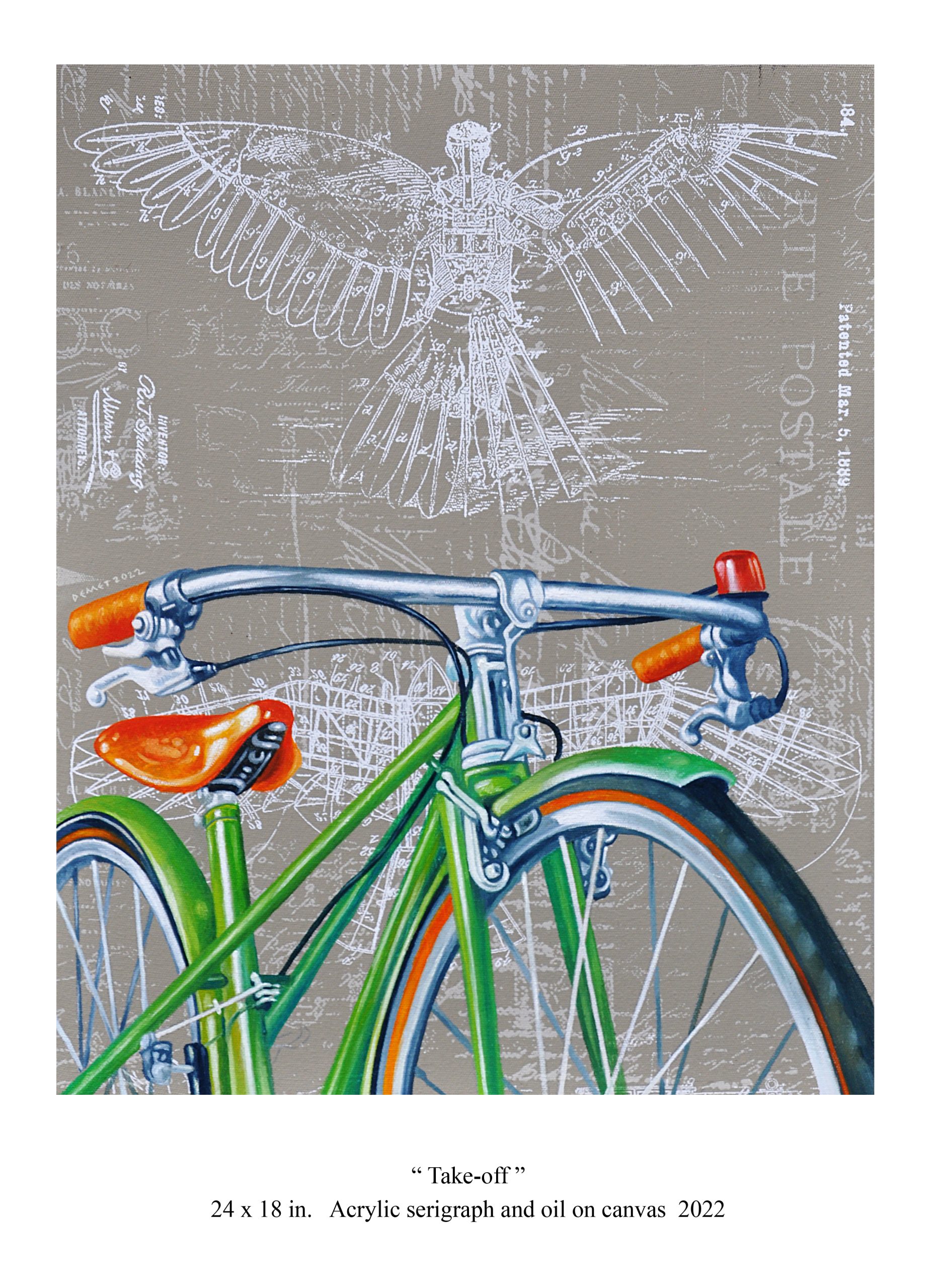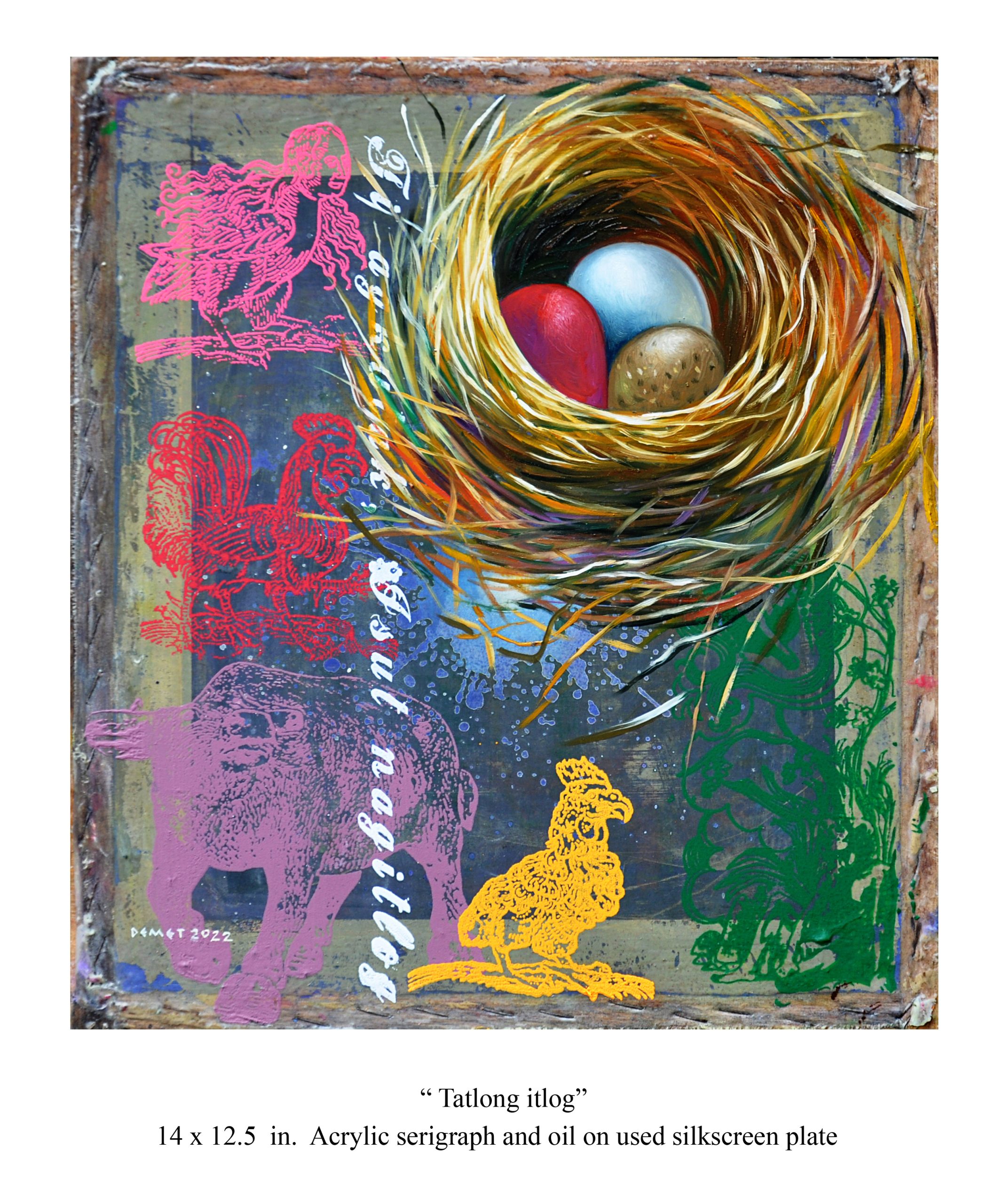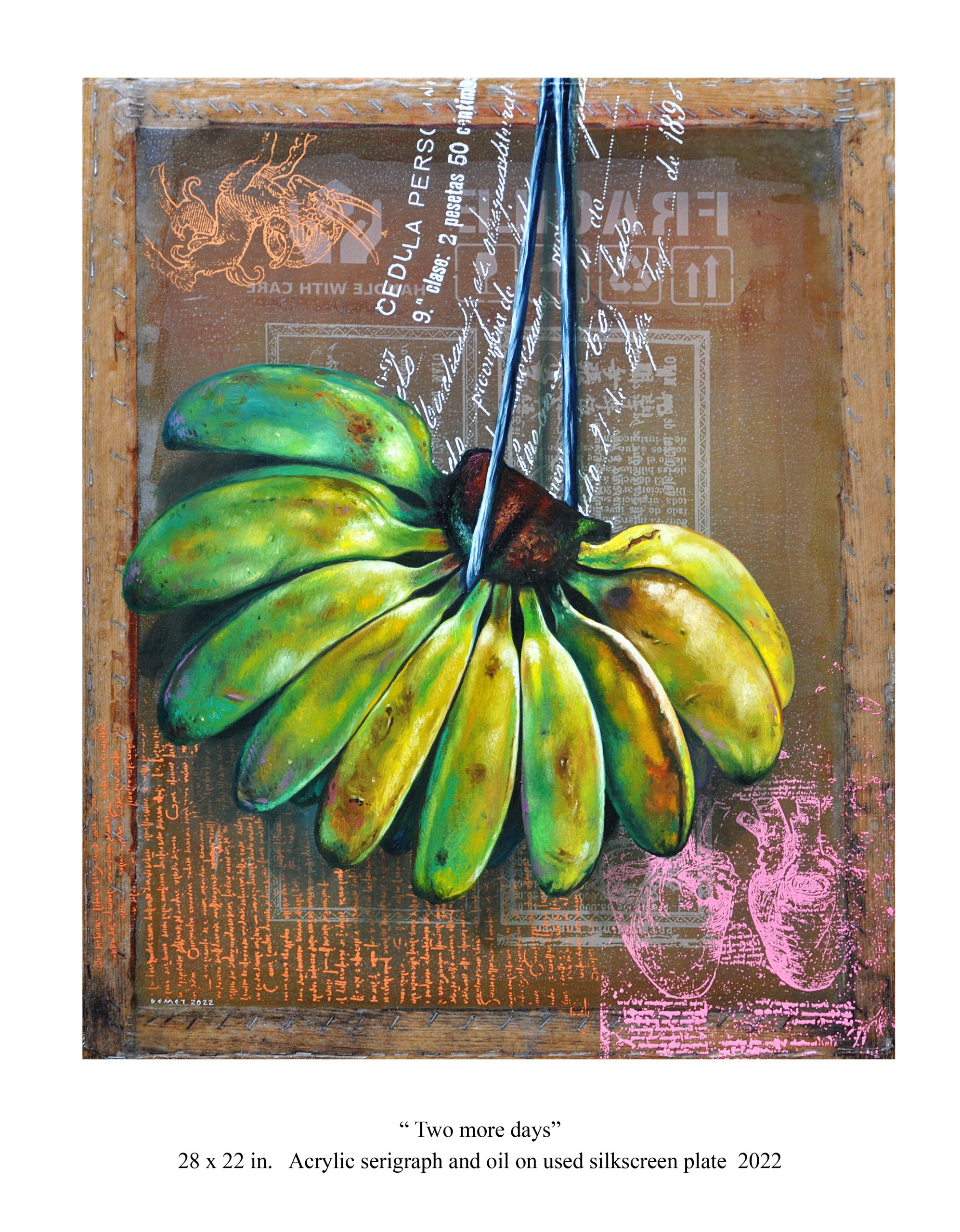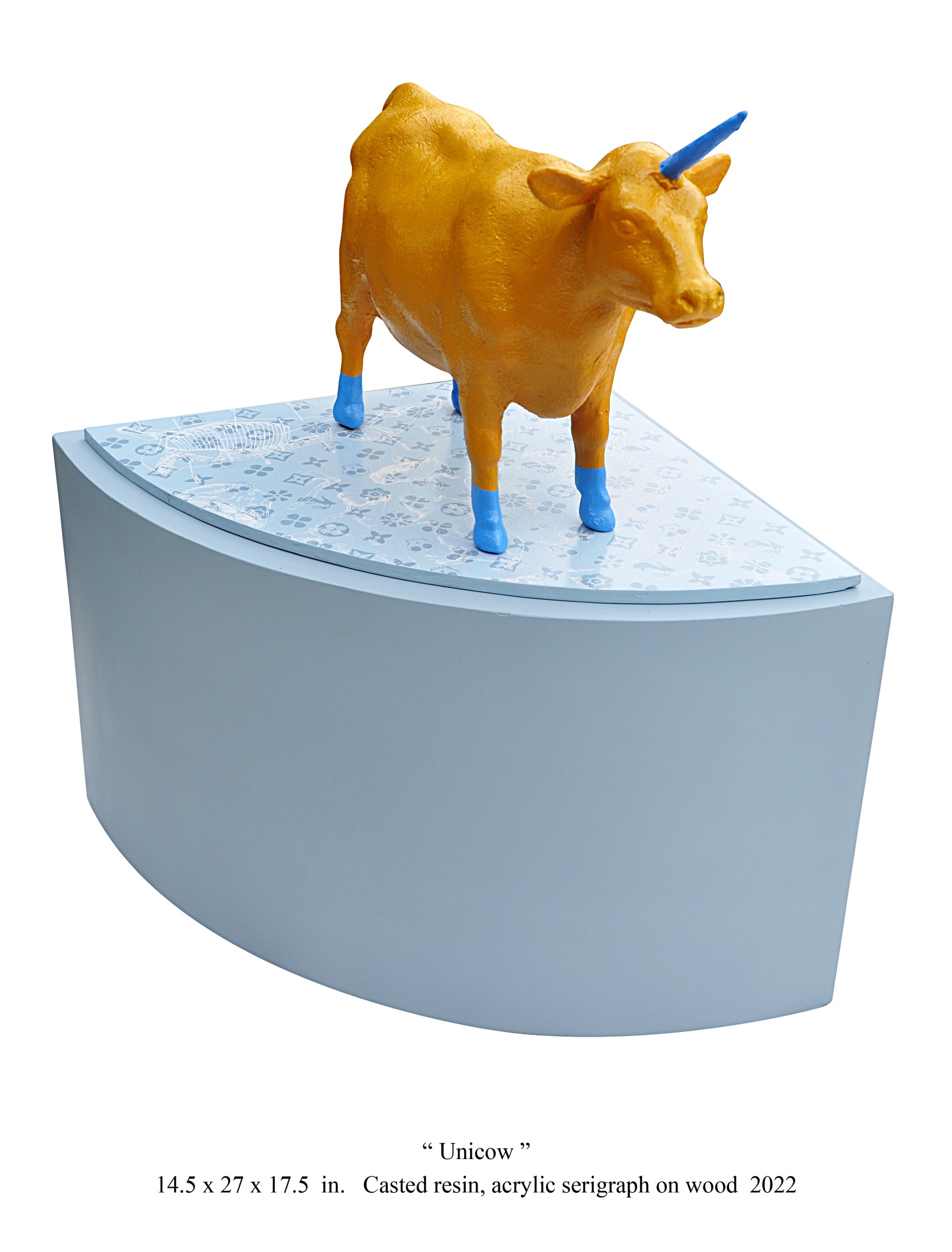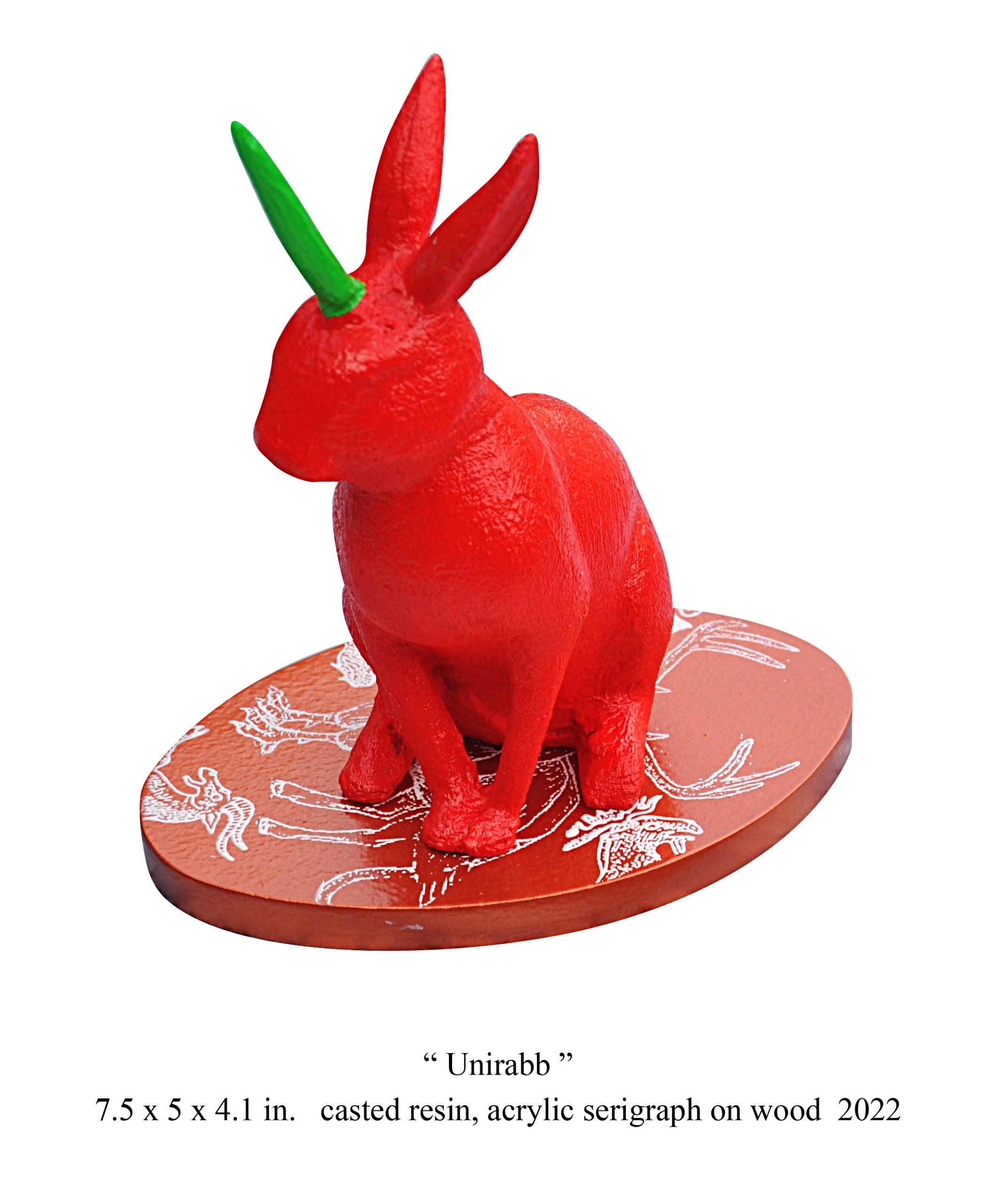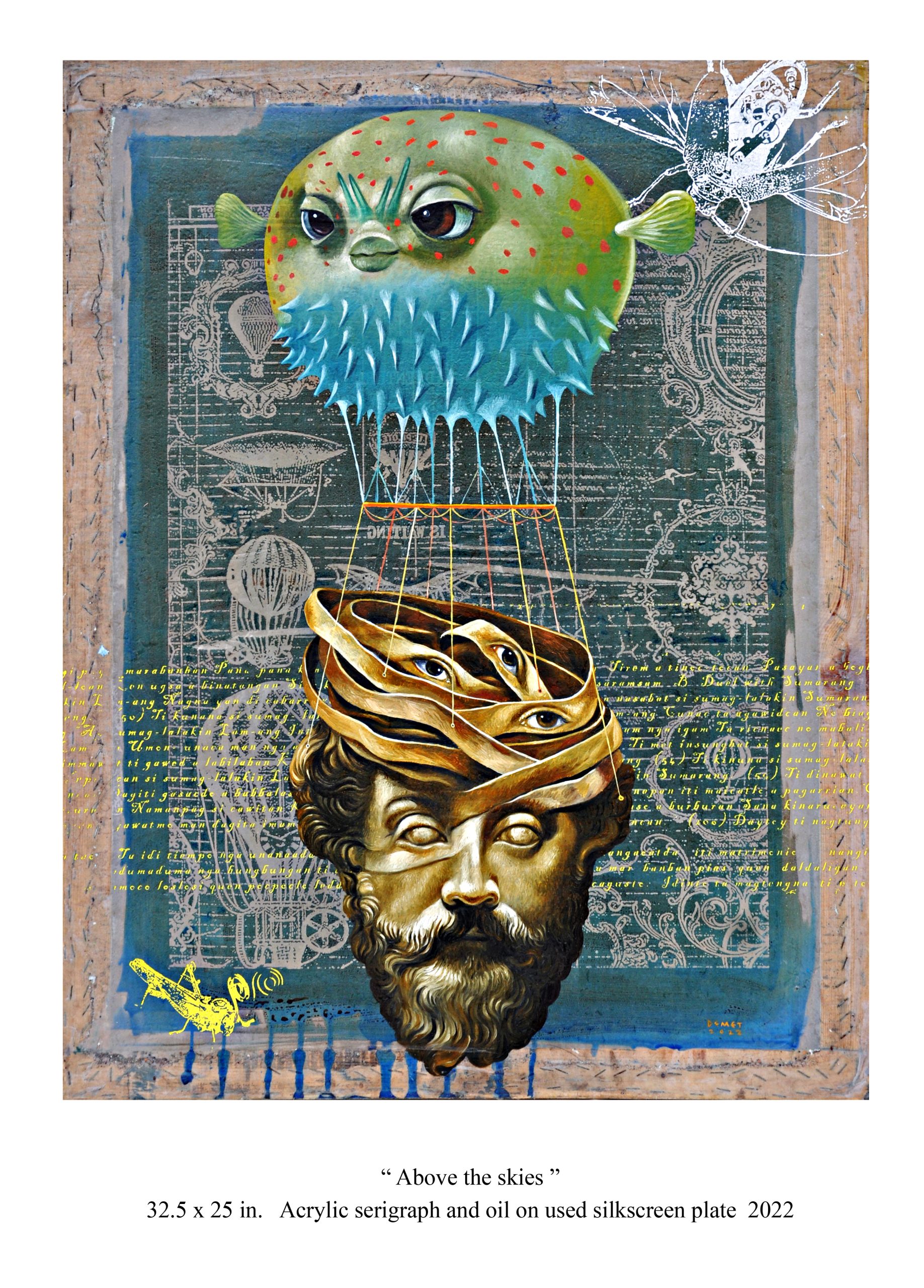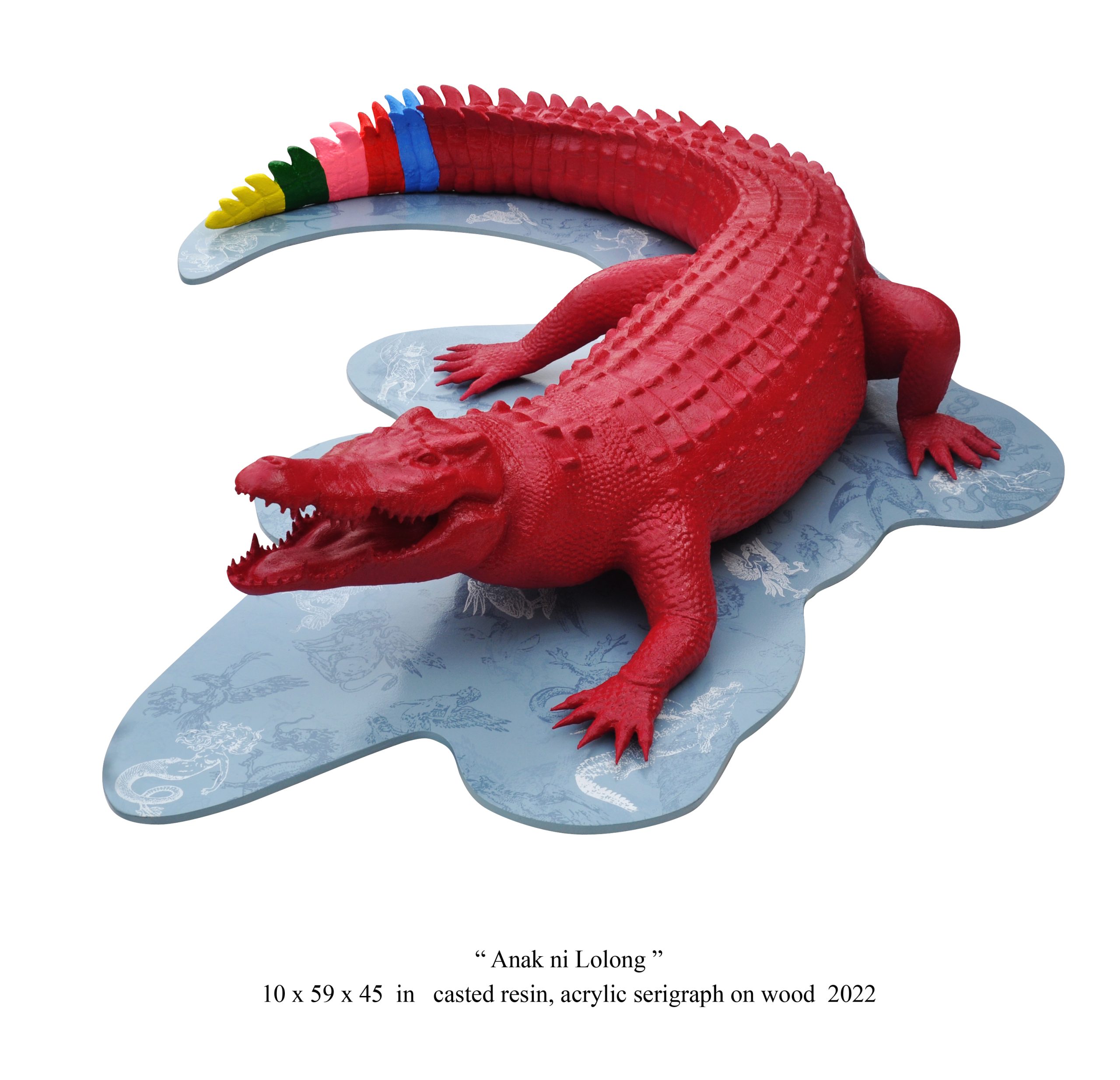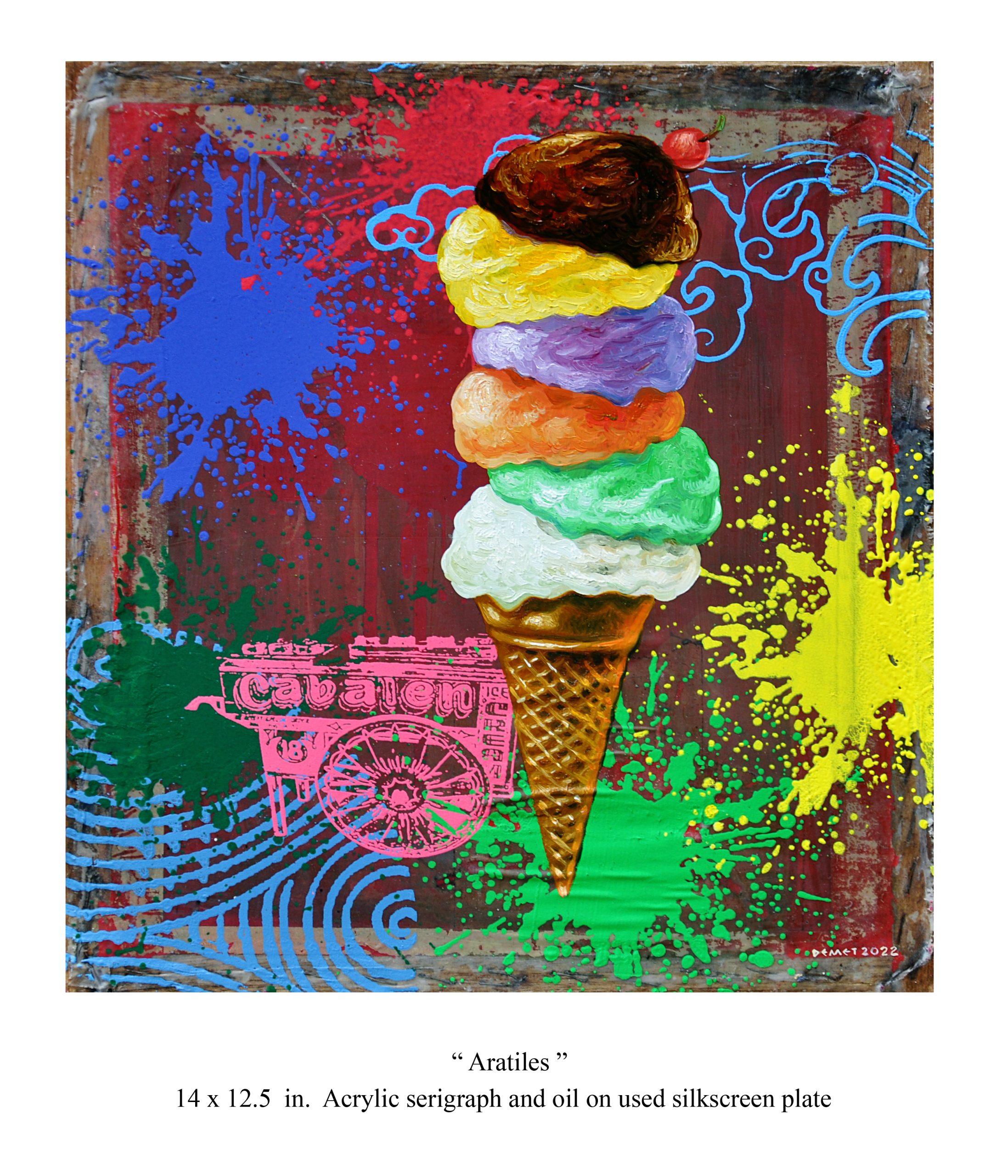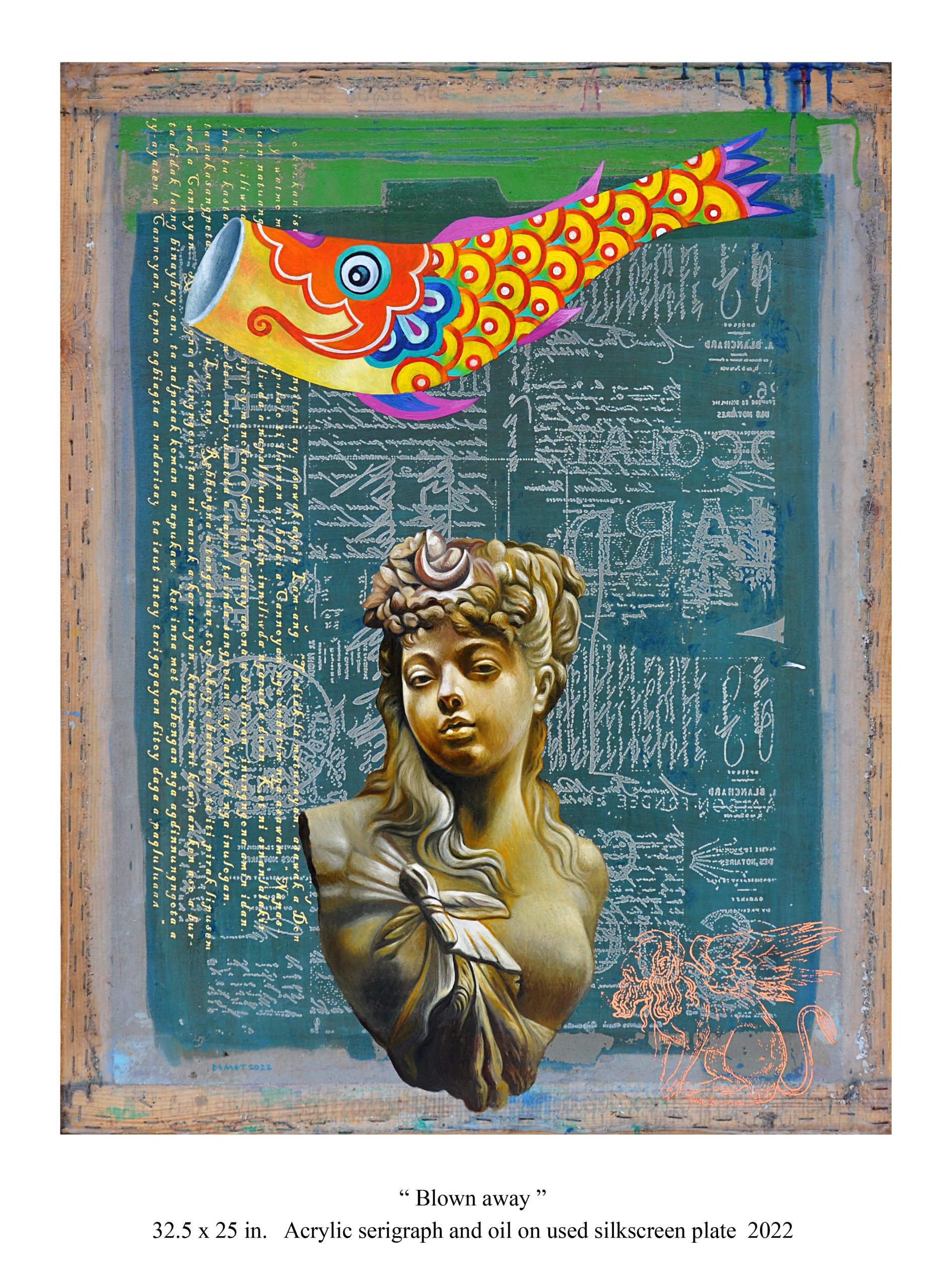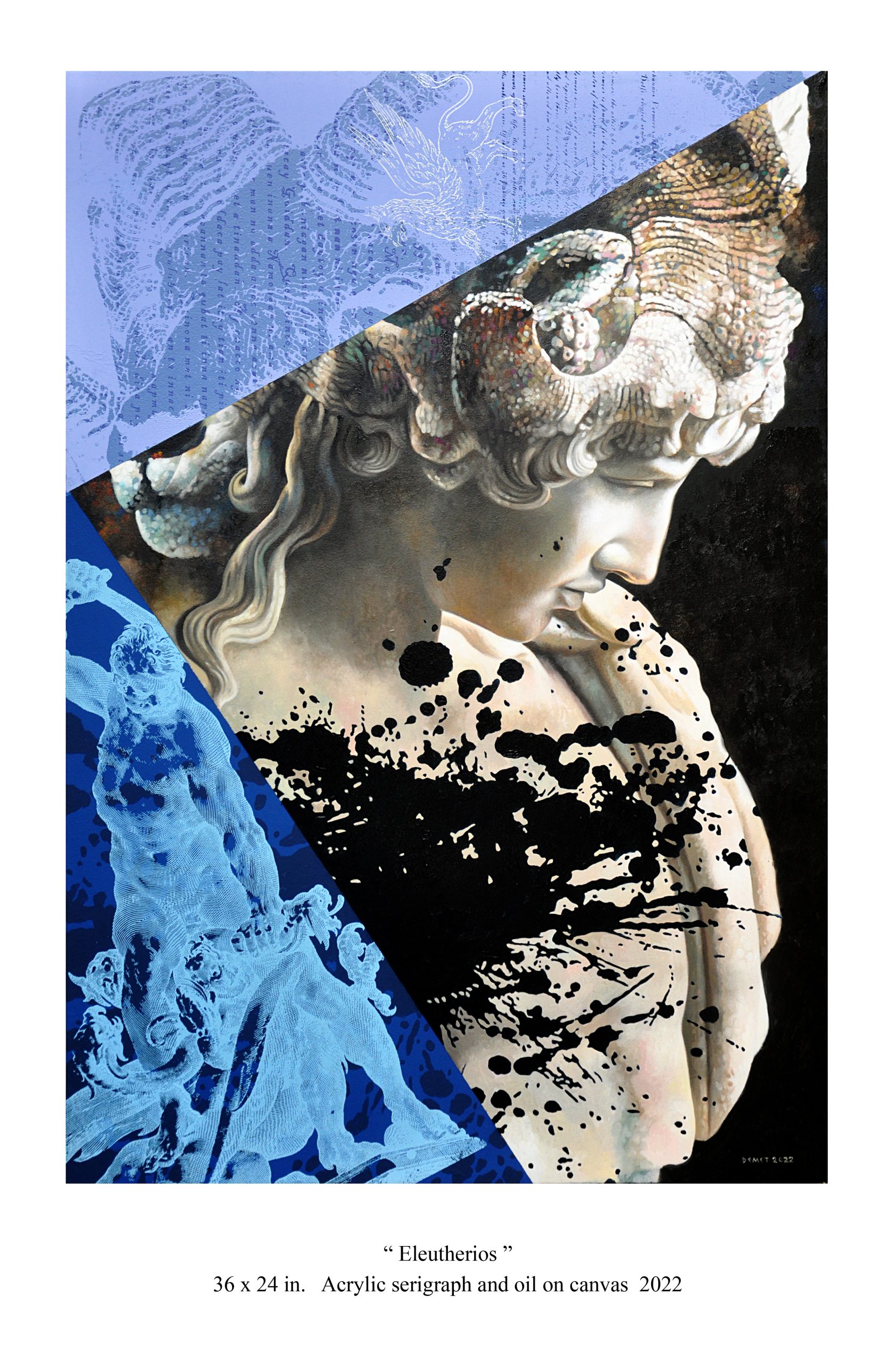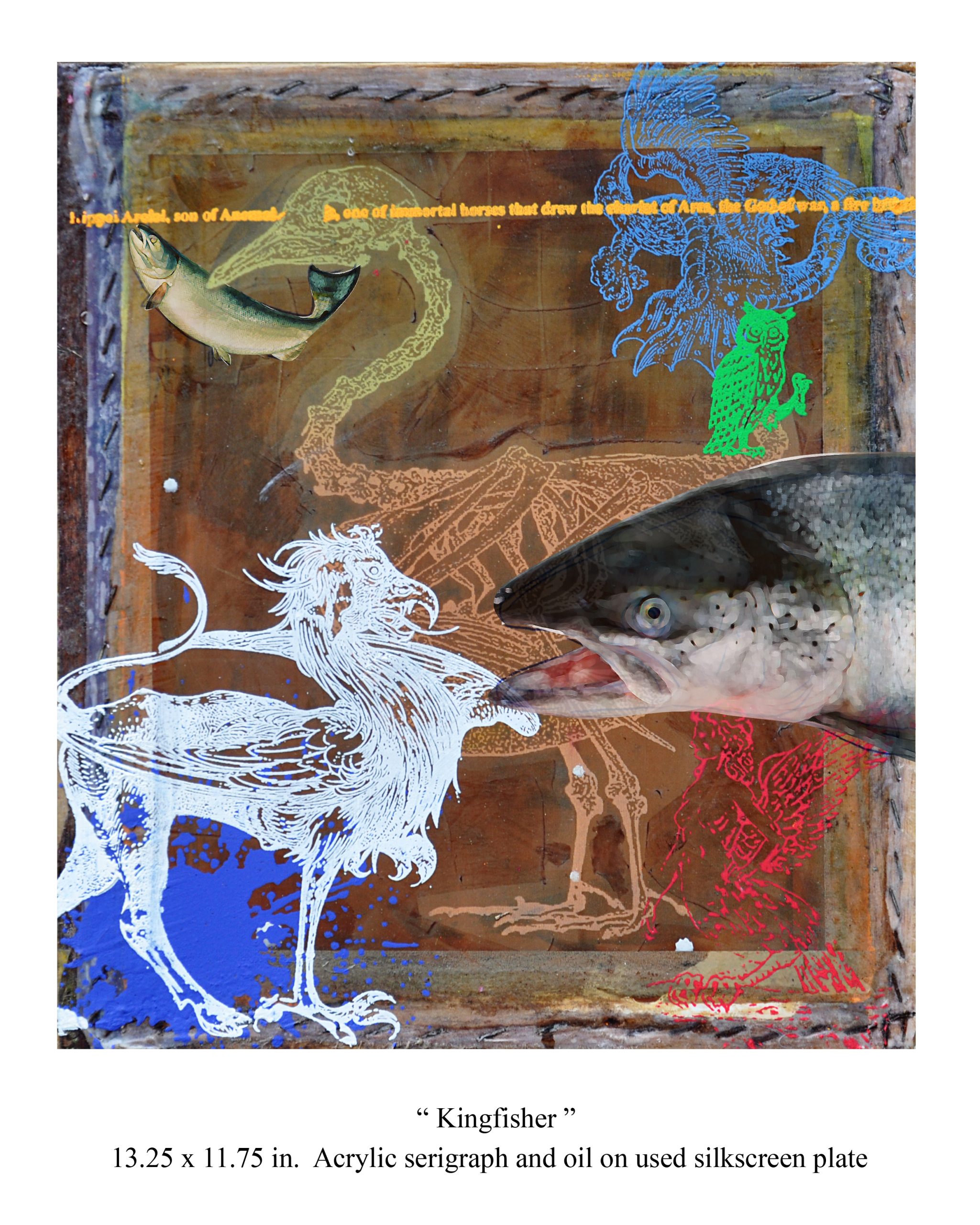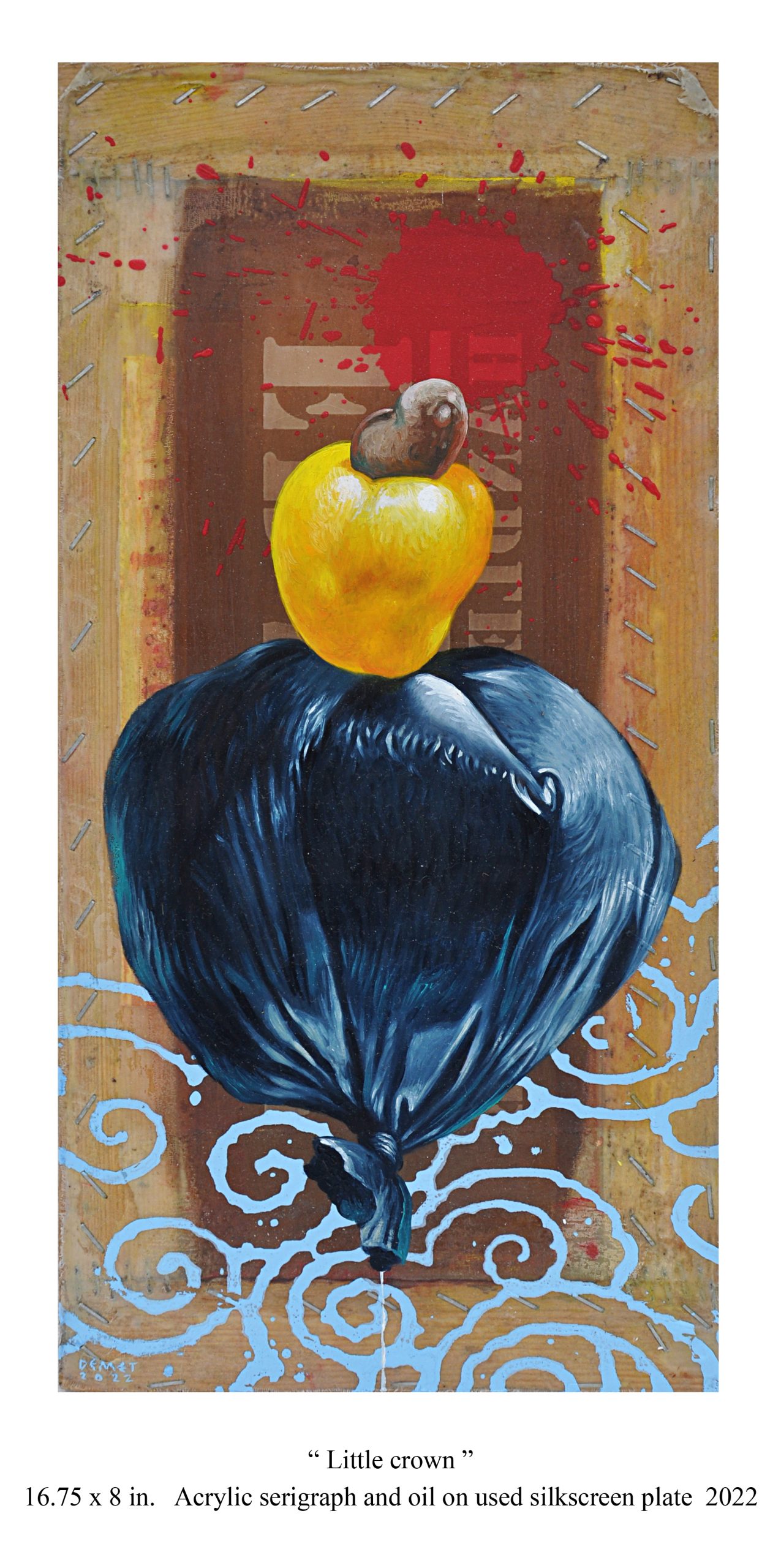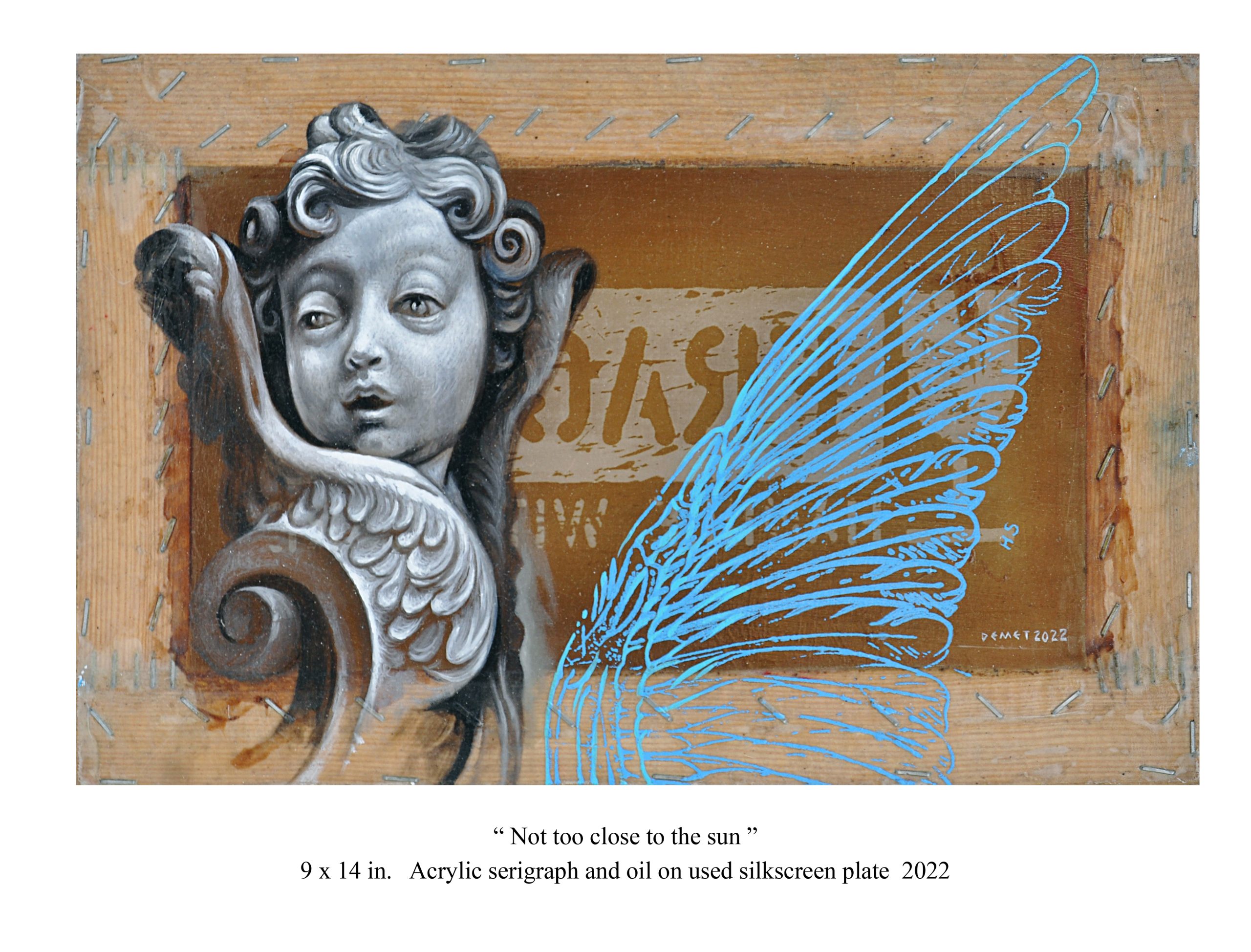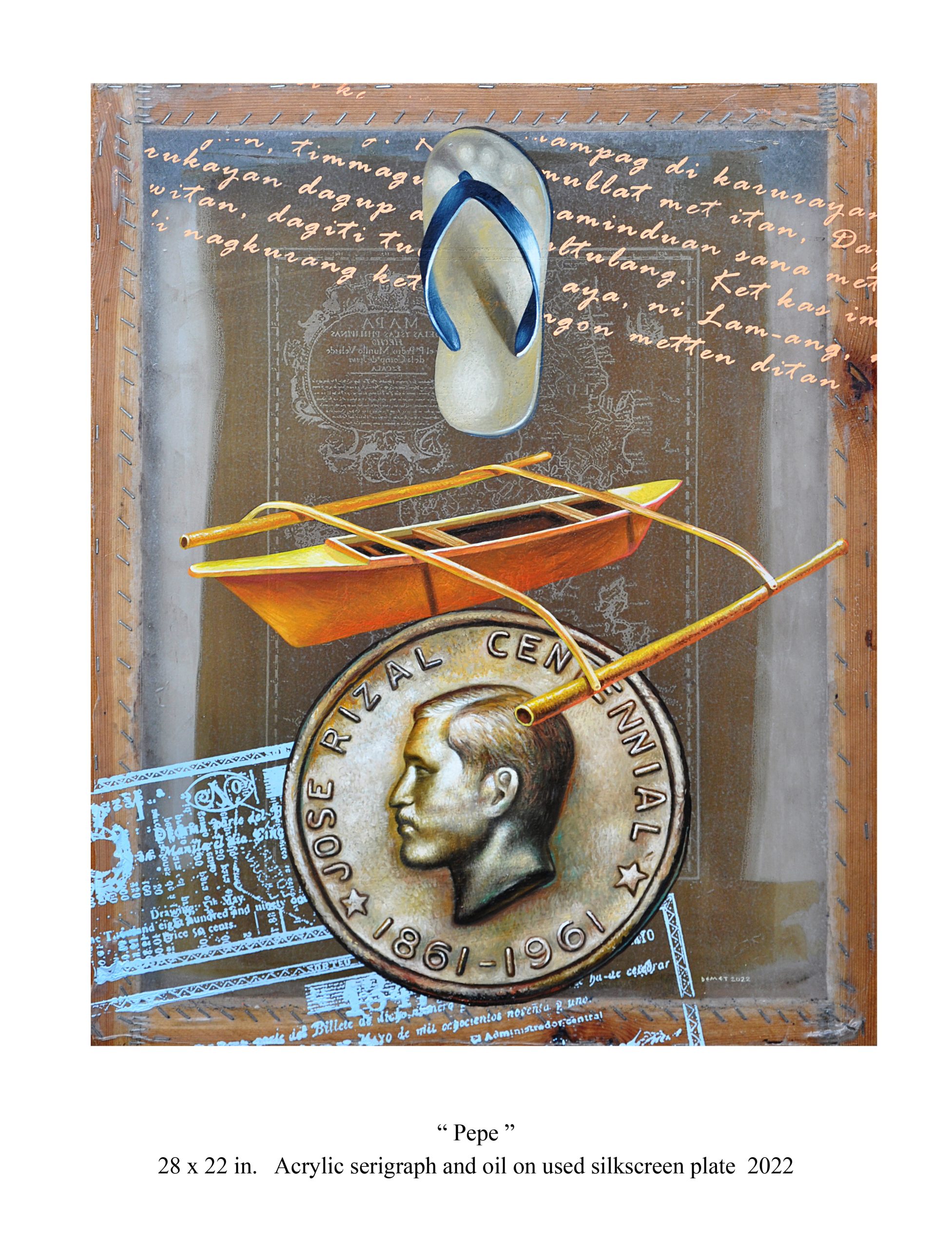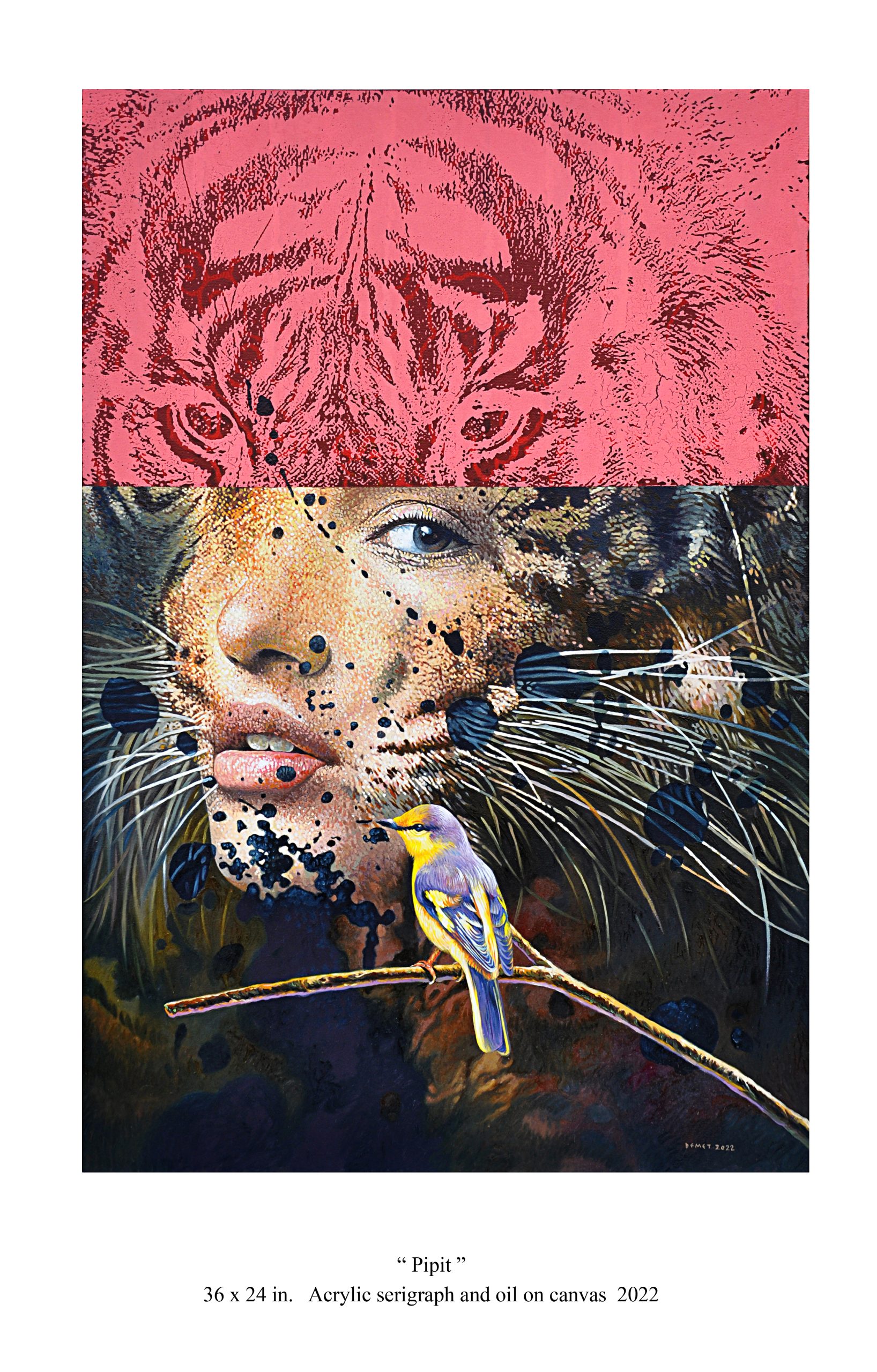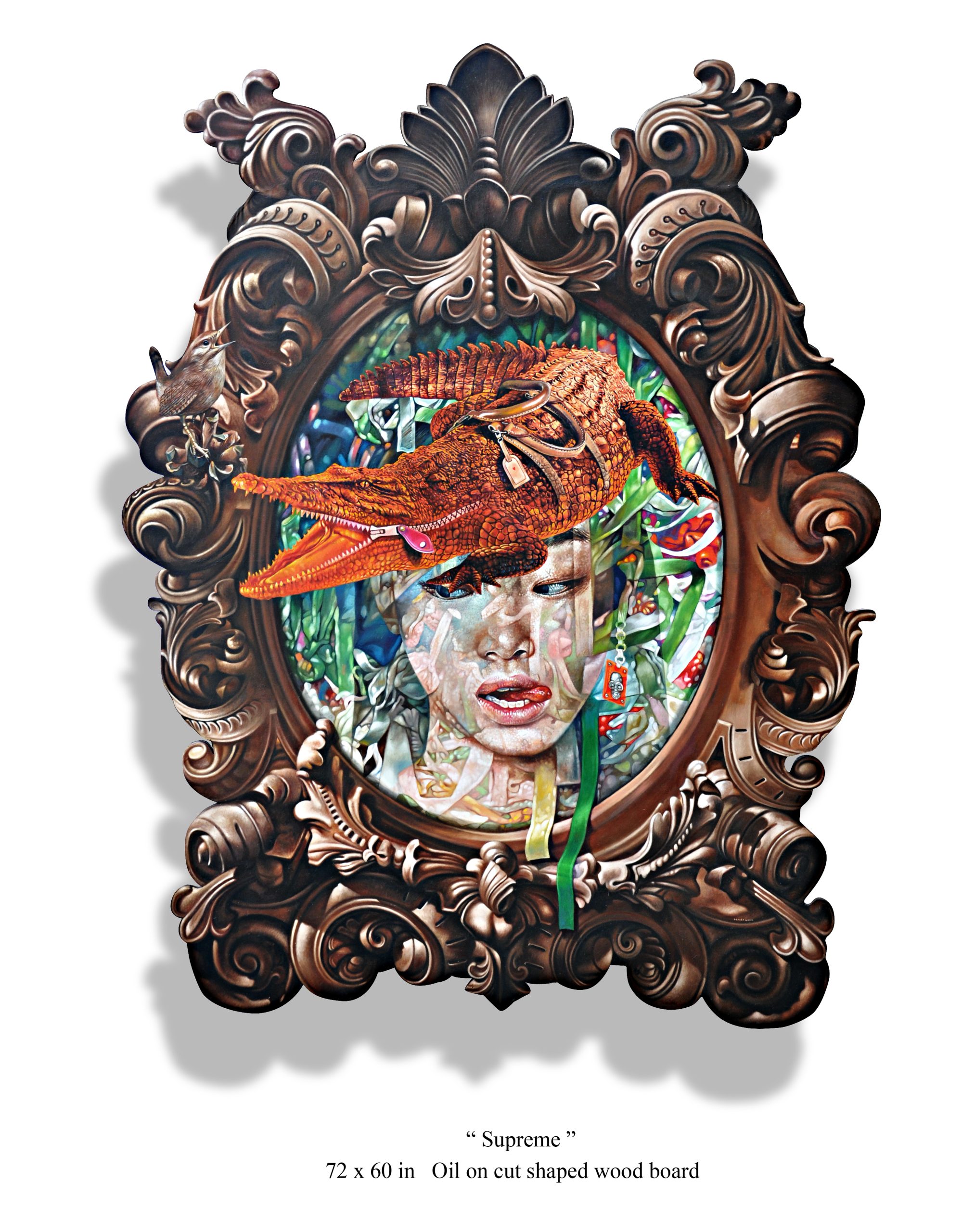Serigraphos
by Demetrio Dela Cruz
In his 19th solo exhibition, Serigraphos, Demet Dela Cruz experiments by using silkscreen plate as the ground or the support for this suite of paintings, thereby expanding further his visual repertoire that already includes acrylic glass, wood, and even tarpaulin. For the artist, the ground “is the most important part of an artwork; without it, there will be no place to execute mediums and materials.” Providing an analogy, Dela Cruz likens it to a “battlefield” or a “playground” where the expansive, nebulous idea of the artist must contend with and be translated by the plastic limits of pigment.
The choice of old and already used silkscreen plates is telling. While the artist could have easily chosen the conventional material of canvas, paper, wood, or even metal, the existing designs of the plates offer a counterpoint to the fresh applications of images, ranging from flora and fauna, to human and sculptural forms, to ordinary, mundane objects such as a slipper, a garbage bag, a commemorative coin. These recent forms converse and interact with the ghostly imprints of the hollowed-out patterns. Together, they generate powerful juxtapositions, such as in work in which a “FRAGILE” label now exists side-by-side with the visage of an angel.
Evidently, Dela Cruz respects the history of the serigraphic plate as it is not totally obscured by the new images rendered in oil. In fact, in act of referentiality, the artist has also applied acrylic serigraph onto the plate. Now, it no longer is the hidden, uncomely tool that transmits an image onto a matrix but a work of art that is worthy to be displayed. In a way, the artist exposes the invisible instrument that has made possible many a painting in his career. It is as if he has breathed a new lease of life onto these silkscreen plates.
His interest of using existing materials for art aligns Dela Cruz to those artists who routinely use and display ordinary objects as art, ranging from Marcel Duchamp and his ready-mades to Jeff Koons and his vacuum cleaners and basketballs in vitrines to Roberto Chabet and his clipboards and compact mirrors. Unlike them, however, the artist digs deep into his own studio, looking for things to which he can assign “a second purpose after its main purpose” has been fulfilled, a quality reflected in the works in
- what Dela Cruz calls “as the aftermath of life.”
-Carlomar Arcangel Daoana
Pintô Art Museum
07 August - 28 August 2022
Address: Antipolo, Philippines


